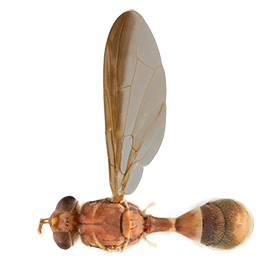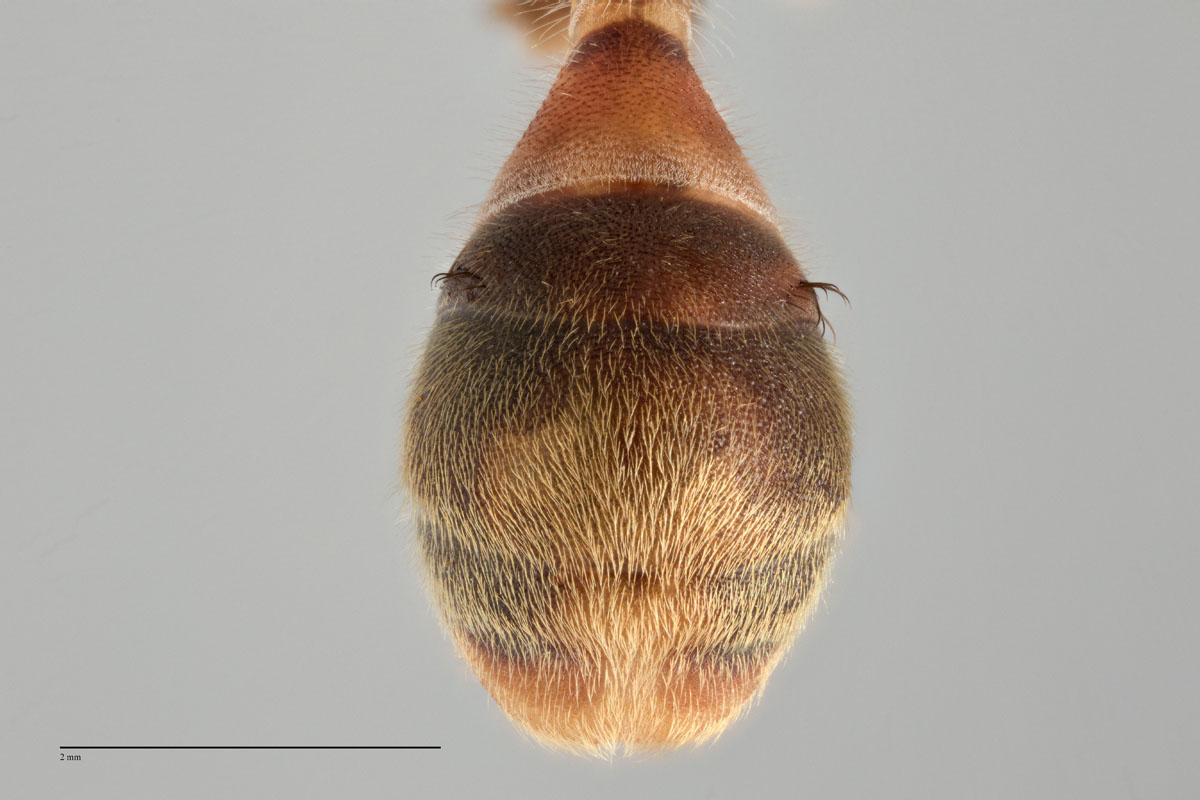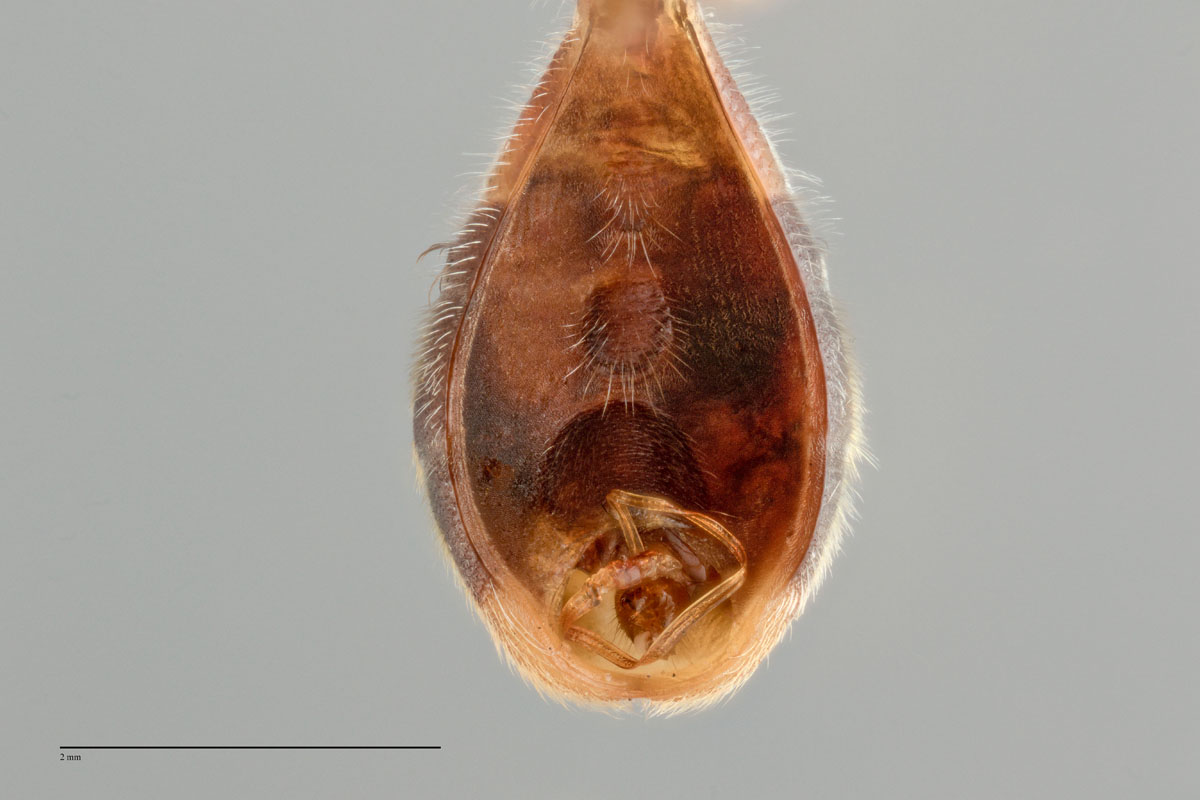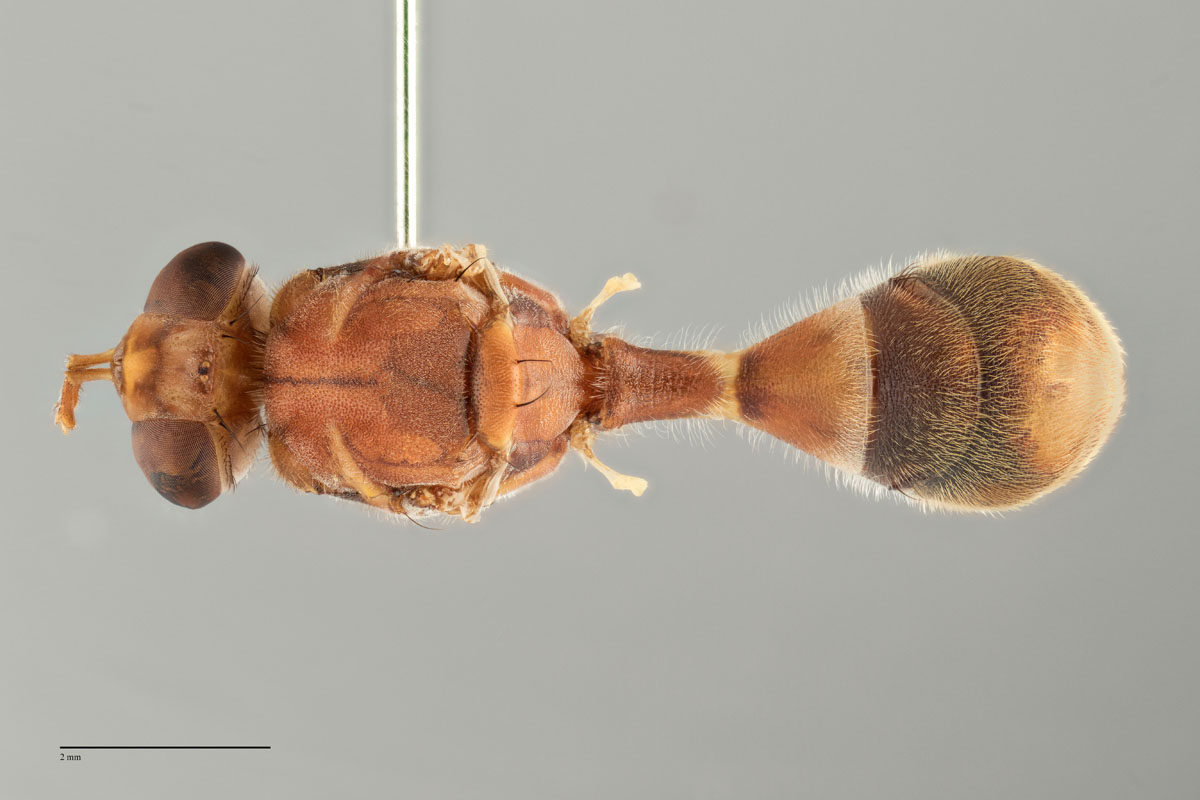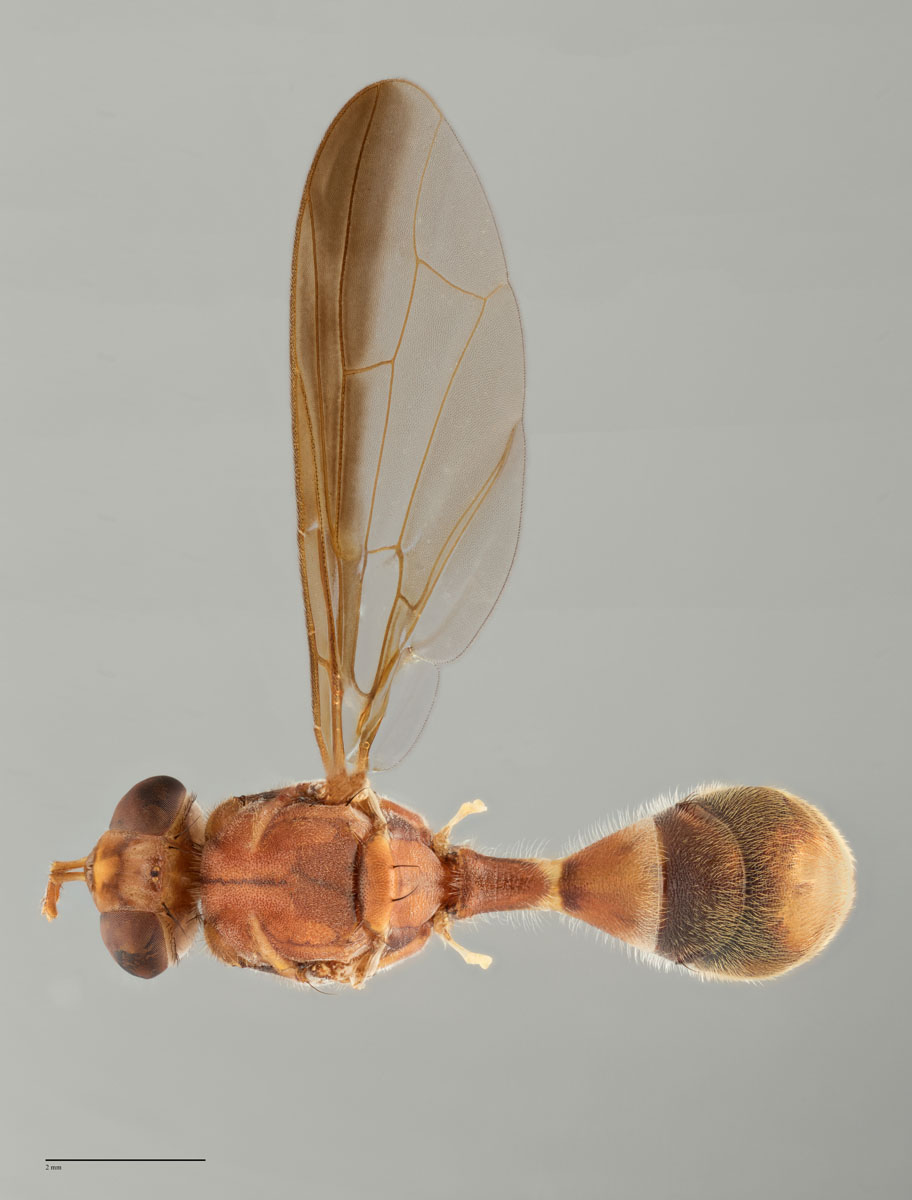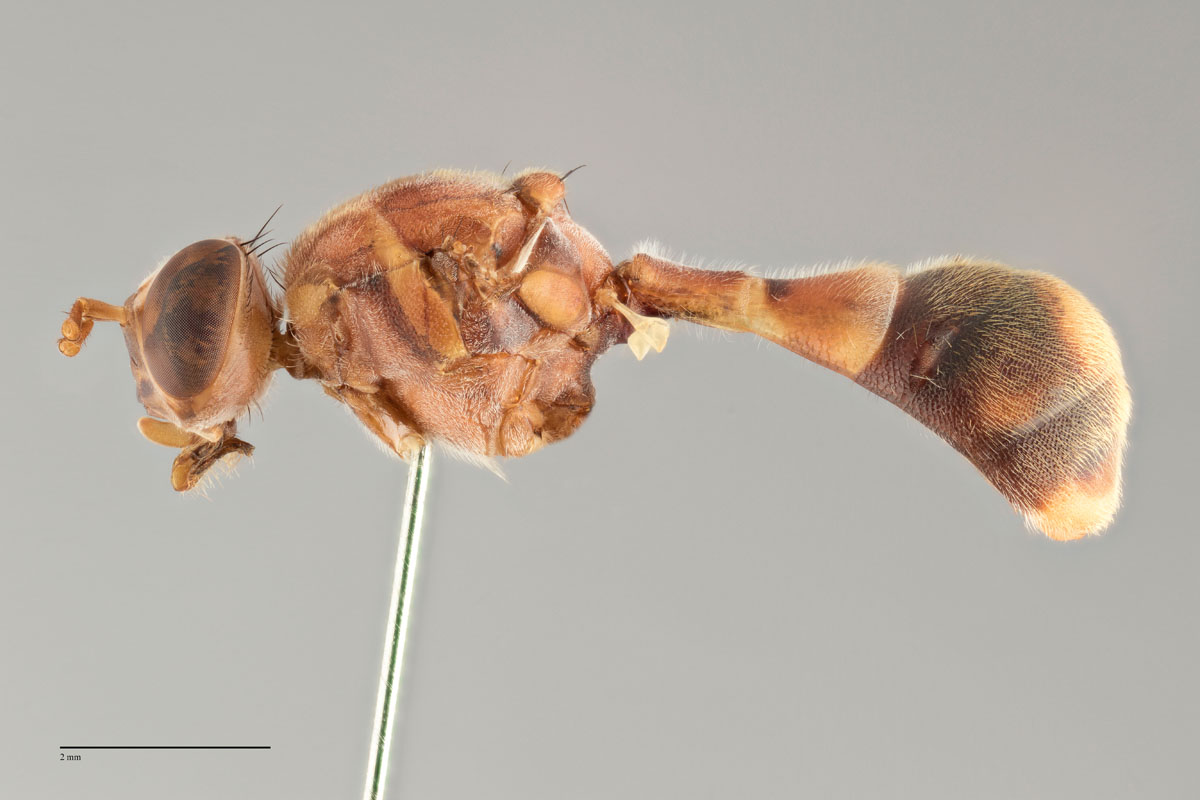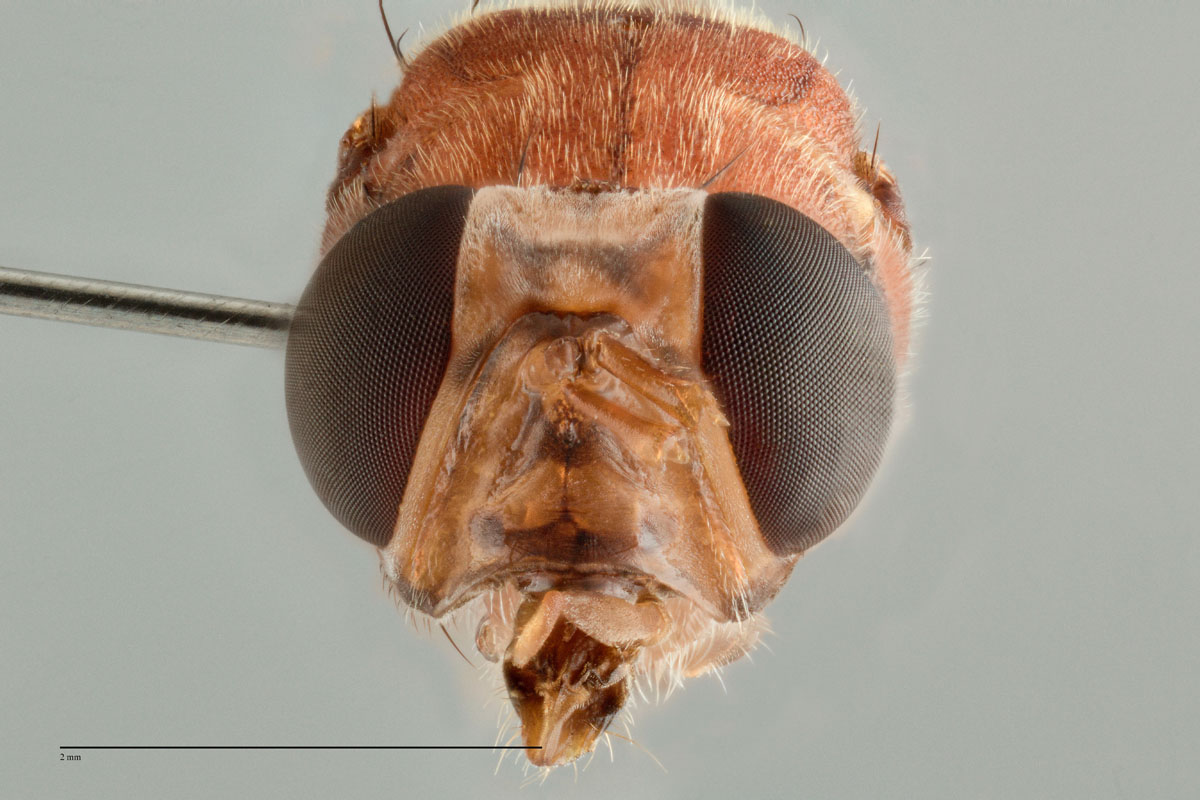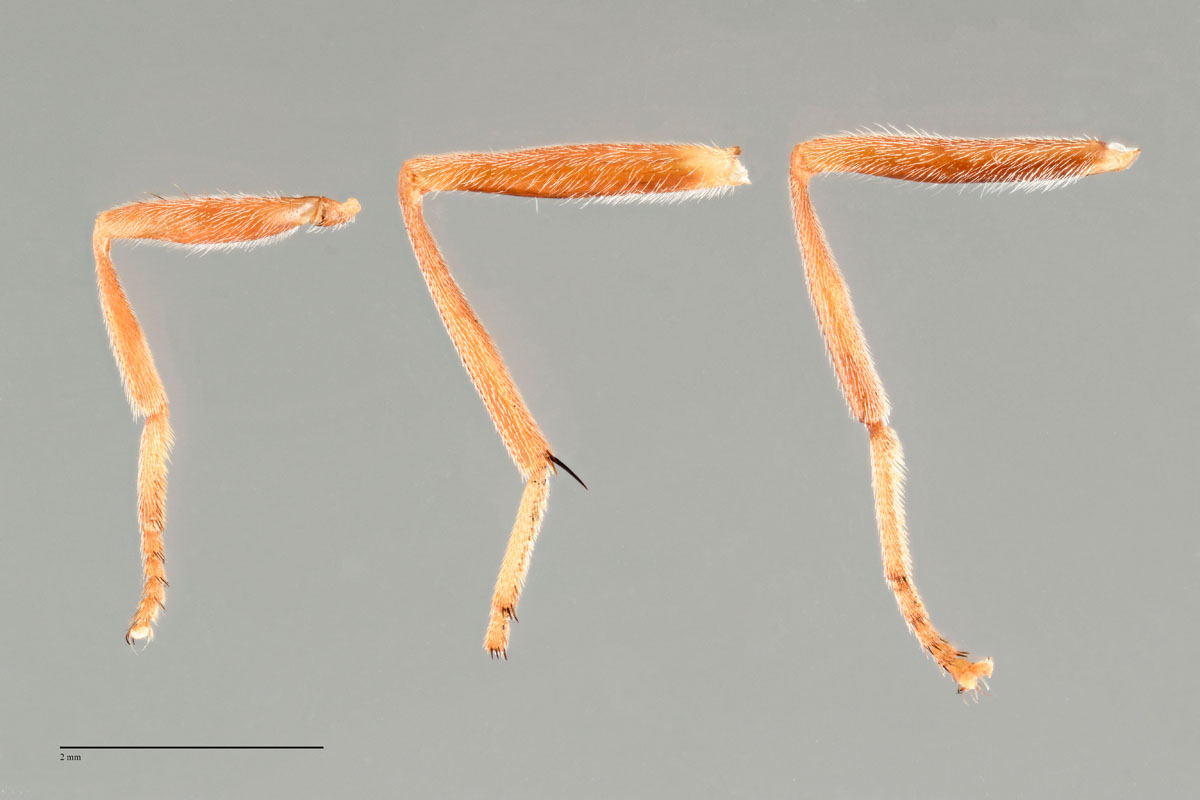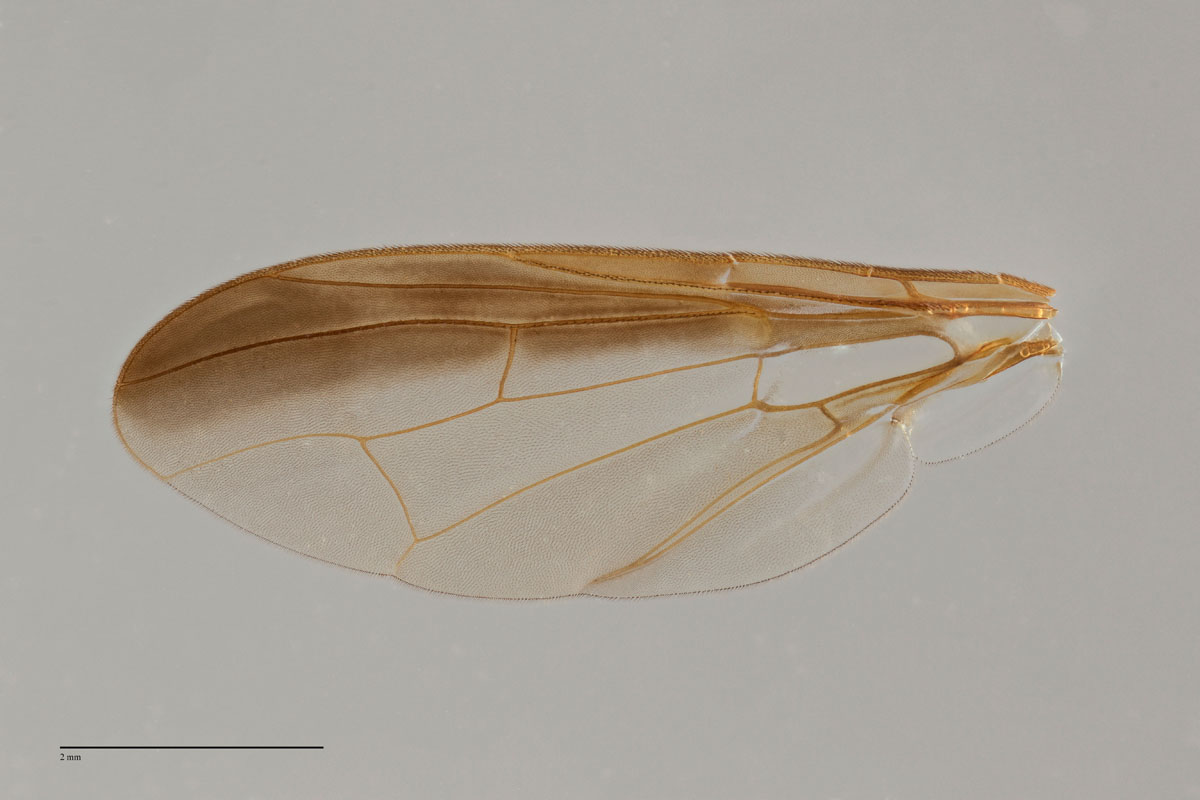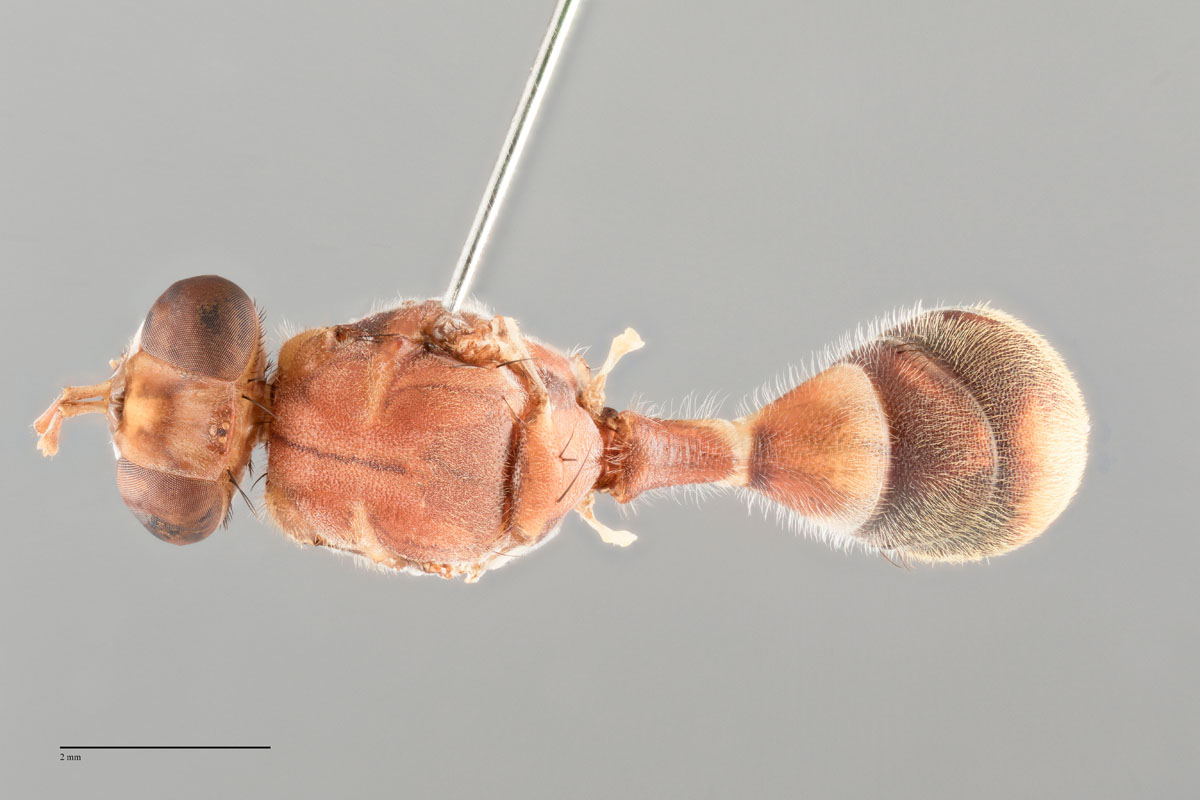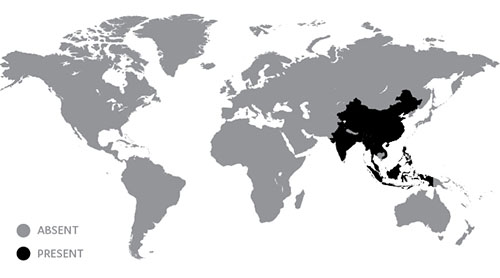Diagnosis
Morphological – adult
Features include:
- a large species
- face fulvous with a pair of small irregularly oval black spots
- postpronotal lobes yellow except posterodorsal corners fuscous
- notopleura yellow
- scutum dark red-brown without distinct dark patterns; lateral and medial postsutural yellow vittae absent
- a narrow yellow triangle running along anterior margin of notopleural suture with base on notopleuron
- mesopleural stripe narrow equal in width to notopleuron dorsally
- scutellum yellow except for broad red-brown basal band
- setae: sc. 2; prsc. absent; ia. 1; p.sa. 1; a.sa. 1; mpl. 1; npl. 2; scp. 4
- legs with fore femora dark red-brown to fuscous, mid femora dark red-brown to fuscous except fulvous on basal 1/4, hind femora dark fuscous
- fore and mid tibiae dark red-brown to fuscous, hind tibiae dark fuscous
- fore tasi with all segments dark red-brown, mid and hind tarsi with basal segment fulvous and apical four segments red-brown
- wing with cells bc and c fuscous, dense microtrichia over all of cell c and most of cell bc
- a broad dark fuscous costal band overlapping R4+5 for its entire length and sometimes becoming darker at apex
- anal streak indistinct but a broad pale fuscous area generally over cell cup and across wing margin towards cell dm
- supernumerary lobe weak
- abdomen strongly petiolate, abdominal terga III-V generally dark fuscous to black with a paler band often across posterior margin of tergum III, large orange-brown spots posterocentrally on terga IV and V with the spot on tergum V often expanded anteriorly into a medial longitudinal orange-brown band.
Morphological – larvae
No information available.
Molecular
DNA barcoding
Diagnostic BOLD reference data available.
PCR-RFLP Test 1
BsrI: Data not available
HinfI: Data not available
HhaI: Data not available
Sau3AI: Data not available
SnaBI: Data not available
SspI: Data not available
Vspl: Data not available
PCR-RFLP Test 2
Data not available.
